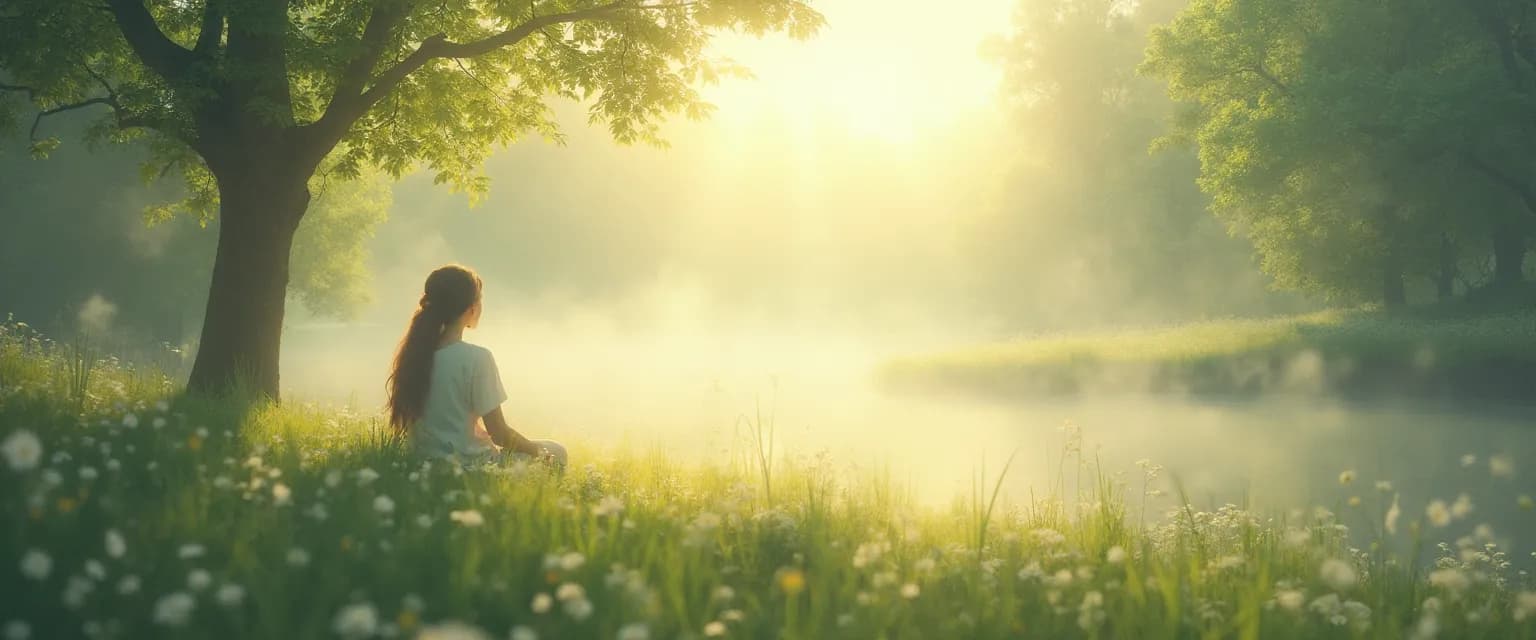Simple Anxiety and Visualization Techniques for Non-Visual Thinkers
Ever found yourself stuck when trying to use anxiety and visualization techniques because you think you "can't see mental pictures?" You're not alone. Many of us believe visualization requires artistic talent or the ability to conjure perfect mental images. But here's the liberating truth: effective anxiety and visualization techniques have little to do with artistic ability and everything to do with engaging your senses in ways that feel natural to you.
The science behind anxiety and visualization techniques is fascinating. When you engage in mental imagery, your brain activates many of the same neural pathways used when you're actually experiencing something. This creates a powerful anxiety management technique that works regardless of your visualization "skill level." Research shows that even fuzzy, fleeting mental images can trigger your body's relaxation response, making these techniques accessible to everyone.
Think of visualization less as creating a mental masterpiece and more as assembling sensory experiences that comfort you. The beauty of this approach? You don't need to be Picasso in your mind to experience relief.
Multi-Sensory Anxiety and Visualization Techniques Anyone Can Master
The most effective anxiety and visualization techniques embrace what I call the "sensory palette" approach. Instead of forcing yourself to "see" perfect images, you'll build mental scenes using whatever senses come most naturally to you.
Sound Anchors
For many people, sounds are easier to imagine than visuals. Try this 30-second exercise: Close your eyes and imagine the sound of gentle waves lapping at a shore. Focus on the rhythm, the subtle variations in each wave. Can you hear seagulls in the distance? The rustle of a gentle breeze? This sound-based approach to anxiety and visualization techniques activates your parasympathetic nervous system just as effectively as visual imagery.
Tactile Visualization
Touch-based imagery can be incredibly grounding. Imagine the feeling of warm sand between your toes or cool sheets against your skin. These tactile anxiety and visualization techniques create immediate physical responses – notice how your muscles might relax just thinking about that warm sand? This approach works beautifully for people who process the world through physical sensations rather than mental pictures.
Olfactory Imagery
Our sense of smell has direct connections to our emotional brain. When practicing anxiety and visualization techniques, try recalling your favorite comforting scent – perhaps fresh bread, pine forests, or calming lavender. Even if you can't "see" a lavender field, simply evoking its scent can trigger a cascade of relaxation responses.
The beauty of multi-sensory anxiety and visualization techniques is that they work with your brain's natural preferences. Some people naturally think in sounds, others in feelings or smells. By embracing your dominant sensory channels, you'll create more effective anxiety-relief scenes without forcing yourself to become a mental artist.
Overcoming Common Roadblocks with Anxiety and Visualization Techniques
The frustrating "blank mind" phenomenon is perhaps the biggest obstacle people face when attempting anxiety and visualization techniques. If this happens to you, remember: visualization isn't about maintaining a perfect mental movie. It's about creating brief, impactful sensory impressions that shift your emotional state.
Start with just 10 seconds of focused imagery. If your mind goes blank, simply note "blank mind happening" and gently return to whatever sensory element feels easiest – perhaps the temperature of a beach scene rather than trying to see the entire landscape.
Another effective approach for enhancing your anxiety and visualization techniques is to use physical props initially. Hold a smooth stone while imagining a peaceful riverbed, or listen to recorded ocean sounds while building your mental beach scene. These mindfulness techniques create sensory bridges that make visualization more accessible.
Success with anxiety and visualization techniques isn't measured by how vividly you "see" things. Instead, notice how your body responds – a slowing heart rate, deeper breathing, or relaxed shoulders all indicate your techniques are working effectively.
Build a personal toolkit of 2-3 anxiety-relief scenes based on your strongest sensory channels. One person might prefer the tactile sensation of petting a cat, while another might connect more with the sounds of a bubbling stream. The best anxiety and visualization techniques are the ones that feel natural and accessible to you.
Remember, visualization is a skill that improves with practice. By focusing on multi-sensory approaches rather than perfect mental pictures, you'll discover that effective anxiety and visualization techniques have been within your reach all along – no artistic skills required.




